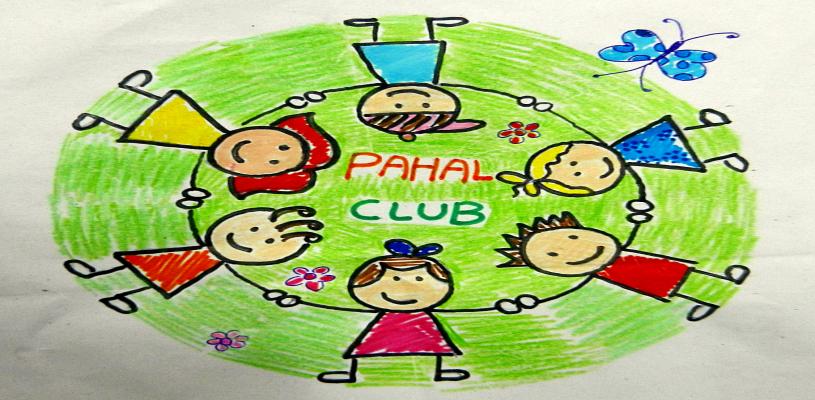Centre for Child and Adolescent Psychiatry
The child and adolescent Psychiatry unit at Central Institute of Psychiatry has been in existence for the last 55 years and since then it has been an integral part of the Institute in providing high-quality patient care, promoting substantial growth in research, and imparting education to the post graduate trainees and scholars in the field of child psychiatry. The department which started with the name of child guidance clinic has been renamed as Erna Hoch Centre for child and adolescent Psychiatry in 2012 after an eminent Swiss Psychiatrist Dr Erna Hoch who spent most of her professional career in Kashmir working for children. After a humble beginning, the vision and hard work of the stalwarts related to the Institute have made it possible for the department to scale new heights and in making a significant contribution in this field. The child guidance clinic was first started at Central Institute of Psychiatry in 1950 at the Sadar hospital, Ranchi with the initiatives of Dr (Maj.). R. B. Davis who was then medical superintendent of this Institute. Initially, the response of the public towards the child guidance clinic was poor which paved way for the weekly visits to a St. Xavier’s school in Ranchi.
Child psychiatry has evolved over the years as a separate discipline that deals with psychological problems in the developmental phase of life from infancy through adolescence. The initial child guidance clinic has now evolved into a fully functional child and adolescent unit. Child psychiatry has been an important discipline in Central Institute of Psychiatry, Ranchi. An independent 50 bedded Child psychiatry unit was started in 1975 in the premises of the Institute. However, the original building was converted to an outpatient department due to increase in patient load in the hospital. But again, an independent building consisting of eleven rooms with a courtyard measuring thirty feet by twenty feet was provided to render services to the child and adolescent population. There are twelve beds for the patients in the main building besides three cottages which can accommodate four patients each with their relatives, giving a strength of total 24 beds which remains occupied most of the time. Besides the Doctor’s room and a Nursing station, the unit has a play and recreation room as well. The courtyard has ample space for playing, a flower garden and there are a number of swings, slips and seesaws for the children.
The patients of this ward are managed by the clinical team which consists of two consultant psychiatrists, one consultant clinical psychologist, one psychiatric social work consultant, one specialist medical officer, two senior residents, four junior residents, three clinical psychologists, one PhD scholar, two psychiatric social workers, and about a dozen of specially trained nurses. The OPD runs six days a week and caters to patients below 18 years. The OPD services consist of psychological evaluation and formal assessments, counselling, parental psychoeducation, individual psychotherapy and pharmacological interventions.
A multidisciplinary approach in the management of all the admitted cases is followed. Admitted patients usually consist of affective disorders, schizophrenia, OCD, substance use disorders, intellectual disability, learning disability, autism, Attention Deficit Hyperactivity Disorder, organic conditions, epilepsy etc. Comprehensive assessment and care for all the patients admitted to the unit is provided. The parents are required to stay with their children for the duration of the treatment. Apart from drug therapy, various psychotherapies, behavior therapy and family therapy are routinely employed. Regular physical exercise, yoga, outdoor and indoor games are practiced in the ward. This unit also imparts training to resident doctors pursuing DPM and MD in psychiatry and postgraduate students in the field of Child and adolescent mental health like psychology, psychiatric social worker and psychiatric nursing. Besides, training is also imparted to visiting students and nurses from other institutions. The unit also contributes significantly by means of scientific publications in various journals and books.
Pahal Club
Regular educational, art and craft sessions for the children are conducted with the help of educated long-stay patients at the Pahal club which is associated with the Centre for Child & Adolescent Psychiatry. Some children are also taught vocational training at the sheltered workshop.
Multisensory room & Playroom
The playroom and the multisensory room were introduced on 15th August 2014. The goals were to create an environment where stimulation of a multisensory nature would match the sensory needs of the children with disabilities. This not only provides relaxation but also various kinds of sensory stimulation and further helps to improve the skills of the children with special needs. Every day in the morning the children are taken to the playroom and multisensory room and participate in the activities designed for them. This also provides the students/trainees crucial learning experience to work with such children. Besides this, various research studies are being carried out in the field to improve our understanding regarding these illnesses.
The facilities consist of a sand pit, ball pit, sensory tent, tactile templates, mirrors and various toys. For children with intellectual disability, autism and other developmental disorders, there is a provision for many specific therapies like multisensory stimulation therapy, sensory integration therapy and multiple training programs like self-help skill training and social and communication skill training. Cultural programs are organised on various occasions like Republic Day and Deepawali with the participation of inpatient children.



